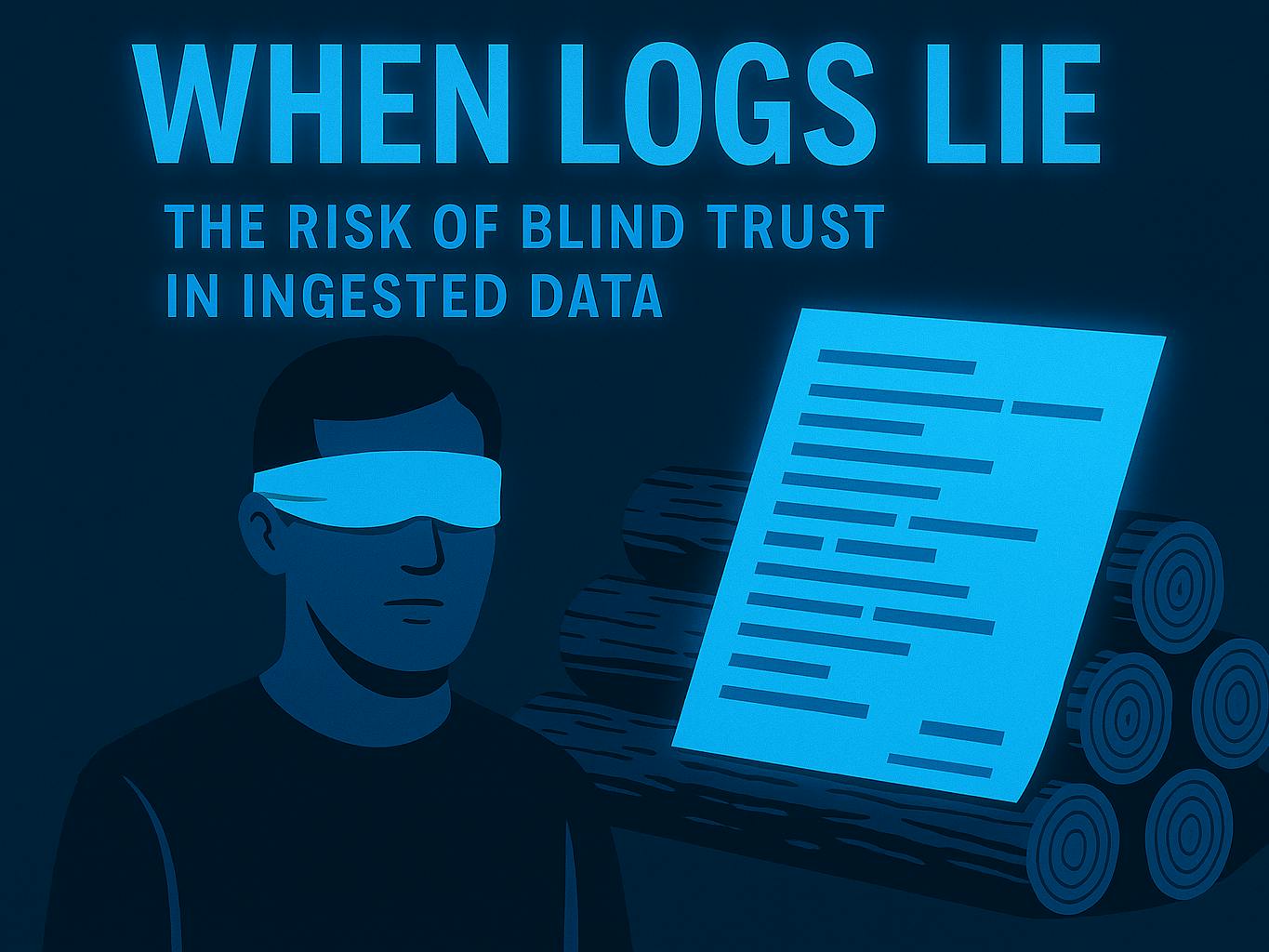When Logs Lie: The Risk of Blind Trust in Ingested Data
Aug 12, 2025

Developers and IT professionals rely on logs every day to understand what’s happening in their systems. We treat logs as the diaries of our infrastructure, if nothing alarming appears there, we assume all is well. But what if the logs themselves are misleading or incomplete? Blindly trusting ingested log data can lead us astray at the worst times.
How Logs Can Mislead You
Logs can be tampered with or missing: In a perfect world, logs are append-only truth-tellers. In the real world, attackers (or software bugs) can meddle with them. A determined intruder who gains server access might delete or alter log entries to cover their tracks. As one expert put it, “Attackers go after logs to cover their tracks… many logs are not read-only; therefore, attackers find the logs and change them”. If logs aren’t securely stored, an attacker can literally rewrite history, destroying evidence of their actions. We’ve even seen attackers disable logging entirely during an attack, for example, the SolarWinds malware turned off security logging while it installed its backdoor, then re-enabled logging afterward. To anyone trusting the system logs, it looked like nothing happened, which is exactly what the attackers wanted.
Logs can be incomplete or delayed: Logging is a complex pipeline, and things go wrong. A misconfigured or overwhelmed log system might drop events without anyone realizing. For instance, if an application suddenly emits logs in a new format, a rigid parser might ignore those events altogether. It’s also common for logs to be delayed: some services batch their output, so an important event might not show up in your console until minutes or hours later. During a production outage or security incident, these gaps and lags can be devastating. You could be staring at an “all clear” dashboard while the real issue is stuck in transit or lost in translation.
Logs can trigger false alarms: Even when logs are collected correctly, automated monitoring can misinterpret them. For example, AWS GuardDuty once misidentified normal network traffic through a load balancer as a port scan by malicious hackers, triggering scary alerts that turned out to be false positives. Teams scrambled to respond, only to realize nothing was actually wrong; it was a quirk of how the logs were interpreted. Such false alarms waste time and can erode trust in the monitoring tools. If we blindly trust every log-based alert as truth, we may chase ghosts and miss the real problems.
Real-World Wake-Up Calls
Take Uber’s 2016 breach. Attackers stole millions of user records, and Uber’s leadership chose to pay off the hackers while keeping the incident hidden. For over a year, no signs appeared in the logs that customers or regulators could see. The absence of log evidence didn’t mean no breach; it meant the truth never made it into the logs in the first place.
Or look at the SolarWinds attack. Attackers backdoored the SolarWinds Orion software used by thousands of organizations. The attackers stayed hidden in global networks for months, partly because of their manipulated logging. The malware disabled logging on targeted systems during its most malicious activities. By shutting it off during their moves and re-enabling it afterward, attackers essentially blinded the security monitors. Many organizations took “no log entries” to mean “no issue”, exactly what the attackers counted on.
The Trap of Overconfidence in Log Platforms
Most log platforms promise a single pane of glass: ingest everything, normalize it, and serve it back through dashboards and alerts. And while this looks clean, the hidden risk is that teams start trusting the picture too much. If ingestion rules are too rigid or parsing drops events, you might never notice. A polished dashboard can give false comfort.
That’s why newer architectures are shifting away from brittle ingestion-first pipelines. CtrlB, for example, takes a different approach: schema-less log search, micro-indexing, and durable blob storage mean you aren’t forced to pre-decide what matters. You can query raw data on demand, correlate logs with traces instantly, and still keep years of history intact. Instead of compressing the truth into pre-modeled dashboards, you keep the full fidelity and context available whenever you need it.
The point isn’t to distrust the platform, it’s to avoid overconfidence. The real risk comes when teams assume that “if it’s not on the dashboard, it doesn’t exist.” CtrlB’s design helps reduce those blind spots, but developers still need to approach logs with curiosity and validation, not blind faith.
Trust Logs But Verify
Logs are powerful, but they’re not the whole truth.
If your logs say “everything’s fine,” but your traces point to failing requests or your users are reporting problems, don’t stop at the logs. Logs capture detail, but traces show how a request moves across services, and user signals tell you how it feels in the real world. Looking at them together keeps you from missing what’s really happening.
Test your pipeline deliberately. Trigger a few controlled errors in staging and make sure they show up in your log search. If they don’t, you’ve found a gap you need to fix before production hits it.
Keep logs safe. Store them in a way that can’t be edited or wiped, so you can trust their integrity when you need them most. Even simple checksums or append-only storage can go a long way here.
And above all, don’t let a green dashboard lull you into false confidence. When something feels off, cross-check with traces, service health, and user feedback.
Logs are essential, but never perfect. Treat them as one strong signal, not the only one.